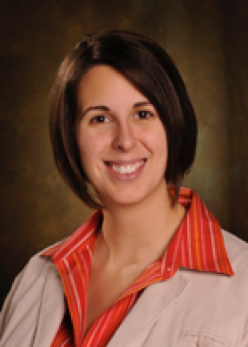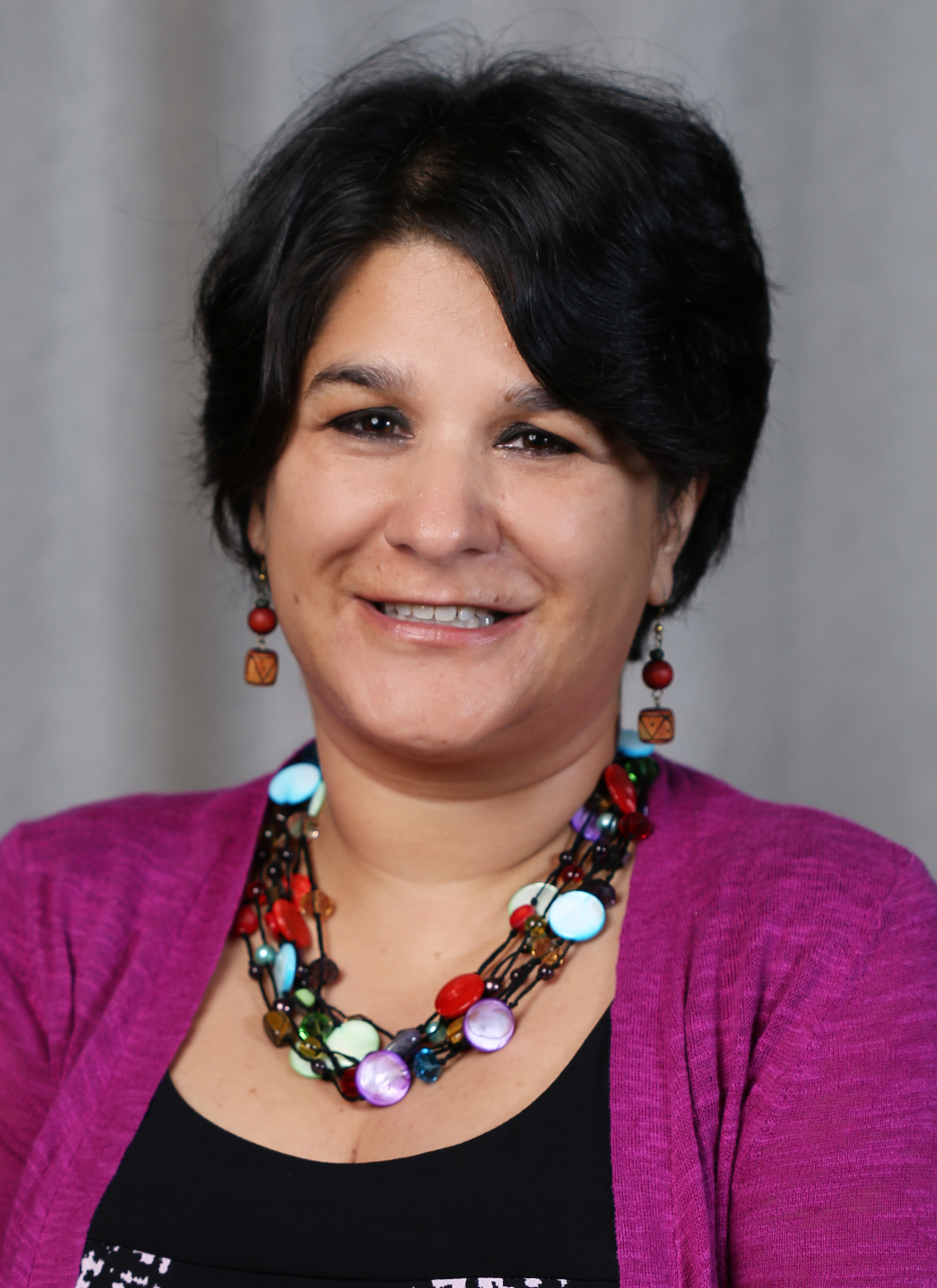Written by Clinton Parks
Sometimes the best way to teach is by example. Personal stories can sometimes be more impactful than lecturing on best practices alone.
After negative lab experiences while pursuing research careers, Dina Myers Stroud, Research Assistant Professor in the Departments of Physics and Medicine at Vanderbilt University and Executive Director of the Fisk-Vanderbilt Masters to PhD Bridge Program, and Marcela Hernandez, Graduate/STEM Diversity Director at The Ohio State University, both adopted a seemingly counter-intuitive solution: choose the mentor over the science. Now in their administrative roles they’re preaching this gospel to would-be scientists.
Hernandez and Stroud met at a symposium on educational policy in late-September 2013 held by the American Institutes for Research. Stroud was presenting about the Fisk-Vanderbilt M.S.-to-Ph.D. Bridge program and The Ohio State was starting a similar Bridge program in physics. They began working together when preparing a joint proposal for SACNAS, the Society for Advancement of Chicanos/Hispanics and Native Americans in Science.
Both started out with the same objective: to run a research lab at a well-regarded academic institution. Both had excellent experiences with their graduate school principal investigators (PIs). Hernandez studied plant molecular biology at The Ohio State University with Erich Grotewold, while Stroud researched zebrafish embryology with Lila Solnica-Krezel at Vanderbilt University. Like most students, they chose those labs largely because of the research being done. They were lucky enough to have had PIs who knew when to nurture and when to challenge them on their journey to earning science doctorates. But their luck would run out.
Postdoc Horror Stories

Dr. Myers Dina Stroud
According to Stroud, the PI during her first postdoc was a newly independent scientist who “clearly didn’t enjoy being a PI and openly said so.” Lab rules were often not spelled out and there was not a defined method of communicating between the PI and the rest of the lab. When Stroud ordered reagents on her own, like she did in Solnica-Krezel’s lab, she was reprimanded by her new PI. But she unexpectedly had less autonomy as a postdoc than as a graduate student. “I [now] understand this was due to restricted funds but instead of making me feel chastised, she could have just said, we need to double check that order before sending,” Stroud says. “I was used to a certain level of autonomy that wasn’t there.”
Hernandez also often experienced poor and sometimes a lack of communication. Her attempts at parsing the logic behind experiments were often misinterpreted as personal challenges. “After meetings I would e-mail her a summary of the conversation for her to review and make sure that is what she meant,” she says.
But the cardinal sin for both labs was that there was no clear scientific question.
“People were working on multiple projects trying to find something that might bring in grant money,” Stroud says. “It was stressful and confusing for me and the other members of the lab.” She says that she fell into depression, although she was never diagnosed. Stroud was considering leaving the lab and went to Solnica-Krezel and other faculty in the field for advice. Reaching out to trusted mentors regularly—even after hitting a rough patch—is something she advocates. They advised her to contact other faculty she was interested in working with but to keep that private. Solnica-Krezel still held out hope to resolve the situation, so she told Stroud to ask her postdoc PI to clarify the lab’s scientific question.
Stroud told her postdoc PI that she and others felt confused by the lab’s apparent lack of direction and “it would help if we could find a focus.” Instead of compassion or contrition, she was met with shock and told, “I don’t care.” Stroud was terminated soon after when her postdoc PI heard from a student in the lab that she was looking to leave. Most of the lab— two out of three postdocs, two students and a lab tech—left in less than two years, Stroud says. Ten months after starting that postdoc, she became a postdoc for Glenn Fishman at New York University.
Stroud made it through. Besides her administrative duties, she is also a research assistant professor at Vanderbilt and an adjunct professor at Fisk. But not every story has a happy ending: Hernandez was not so lucky.

Dr. Marcela Hernandez
Unlike Stroud, Hernandez decided to tough out her postdoc. That is a choice she now regrets but at the time she didn’t want to start working in a new lab, again. She had left her first lab as a doctorate student with a master’s degree, saying that lab was more geared toward postdocs than grad students. She then began working in Grotewold’s lab as a tech. Ultimately, he ushered her into re-entering a doctorate program and then receiving her Ph.D.
In Grotewold’s lab, Hernandez authored 11 papers from her time as a tech to her Ph.D. Even as a master’s level student, she had a research paper published. But in five-and-a-half years as a postdoc, she only published one review, no research papers. “The [scientific] idea was often not clear or logical,” she says about her postdoc PI. She summarized the meetings, Hernandez says, “for documenting purposes as she often changed her story later.”
That lack of academic production stopped her from becoming an independent researcher, Hernandez says. “It makes me angry sometimes because I did want to be a scientist but I wasn’t allowed to,” she says. “The worst part is this is not a unique story. There are a lot of people who have been burned this way.”
Lessons Learned
Those negative mentoring experiences coupled with earlier positive ones helped both Stroud and Hernandez to develop a model for the sorts of mentors they wanted to foster. “I developed a broader perspective on life in academia and the crucial nature of having a mentor and not just an adviser or boss,” Stroud says. “As a result, improving mentorship in higher education and educating students on mentor selection has become an important part of my life.”
As Hernandez and Stroud began working together they realized that they “were both on the same page regarding the importance of mentoring in determining the fate of a scientist,” Hernandez says. Independently, they developed a “mentor first, science second” approach. When considering whether to join a lab, assigning importance only to the science being done in the lab can cloud a prospective student’s judgment. When you’ve got your own lab you can switch your field and determine what you want to research, they say.
Looking back, there were red flags Hernandez and Stroud either missed or ignored at the time. One of those indicators is fit; it’s best to learn if the lab culture and communication style meshes with your personality before deciding to work there.
Sometimes your current PI can provide information about the lab being considered. Hernandez regrets not involving Grotewold when she was choosing a postdoc lab. That “was a huge mistake,” she now says.
But you’ve got to ask the right questions. Stroud talked to Solnica-Krezel about postdocs, but “we didn’t go into detail about what to look for in an postdoc mentor,” Stroud says. “I really wasn’t given much specific direction in evaluating a mentor as part of my graduate training.”
A better source for what the lab’s culture is like are those already working there. Lab members know that lab’s culture best and are often willing to share those experiences privately, Stroud and Hernandez say.
Some questions potential lab members should ask current lab members are: Do lab members know the overarching scientific question? Is there a clear line of communication between lab members and the PI? Do lab members understand each others’ research projects? Are there regular meetings?
Considering science second, however, does not mean it’s disregarded. Potential lab members should consider the scientific question and the skills being taught. It’s also important to look at the lab’s publications, not just the number but their quality, which is often determined by the prestige of the journals and how often they are cited. A poor publication record is a likely indicator that it’s a poor fit.
Dr. Hernandez Head Shot photographed at the OUAB Professional Career Clinic on July 28th, 2016. (Nicole Badik/ Ohio State University / Office of Student Life)